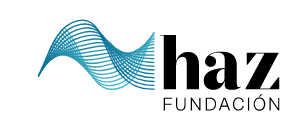Voluntary transparency report on Spanish universities

Haz Fundación, aims to increase society's trust in institutions and companies, while promoting transparency, good governance and social engagement. Established in 2007, it was known as Fundación Compromiso y Transparencia until October 2021. The Fundación produces reports to analyse the voluntary transparency of Spanish universities.
These reports aim to promote web transparency by analysing a set of common areas and indicators, which universities can use to improve their accountability.
Committed to continuous improvement, the Fundación has cancelled a few editions over the years—as in 2017 and 2021—to rethink its methods and models.
As a result of the latest review, Fundación Haz has stopped publishing the transparency ranking on its website, although it still produces the annual voluntary transparency report on universities. Now it awards the so-called "t for transparent” seal to institutions that apply for the new service and certify compliance with a set of previously determined web transparency indicators and principles.
The "t for transparent" seal features three levels of compliance: the t*** category is awarded to those institutions that score more than 90% compliance with the indicators, t** is awarded to scores between 80% and 90%, and t* to scores between 70% and 80%. No seals are awarded below 70% compliance.
According to the publishers, the evaluation of voluntary transparency on websites considers the “effort of organisations to disseminate and publish relevant information so that it is made visible and accessible to all stakeholders in a comprehensive and timely manner”. Four basic criteria are taken into account: visibility, accessibility, the validity and currency of the data, and integrity, in the sense that the information is complete and exhaustive.
The indicators are grouped into ten major areas: strategic plan, personnel, policies and governance, board of trustees—supervision and accountability, only for public universities—dependent entities, academic supply and demand, teaching staff, students, financial information and performance.
Share: